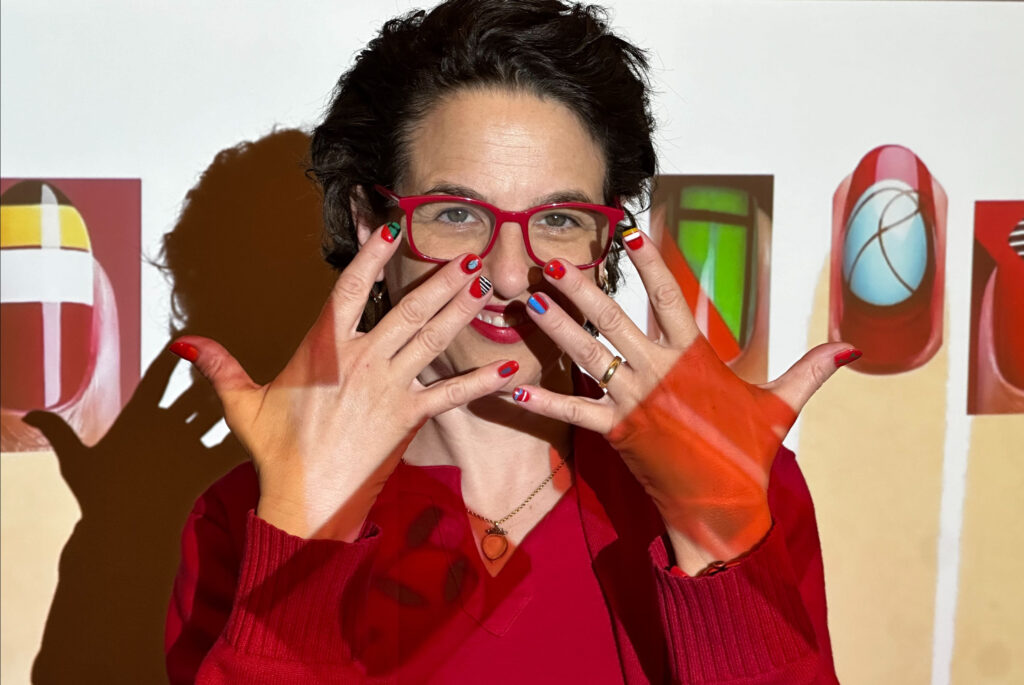
My AI-enabled manicure. The 5 how-to tips are below.
Conversation is central to our working lives. It’s how we learn from one another, work through our own ideas, and perhaps most importantly, collaborate and co-create with others.
Until a year or so ago, the creative and learning potential of conversation required another person. Now, thanks to generative AI, it’s always at our fingertips.
Wisdom, at your fingertips.
My own fingertips led me recognize AI as a conversational powerhouse.
With the help of AI, I got a very special birthday manicure: My left hand was decorated with five symbols representing personal goals for the year, and my right hand captured five professional goals. I created these designs with the help of AI, and took them to the very talented nail artists at my favorite salon.
Creating this design involved a lot more than just feeding some AI a list of ten goals. By the time I was ready to head to the salon, my manicure-related conversation with ChatGPT was six months and 143 pages long, and I had created over 400 separate nail-art images in Ideogram.
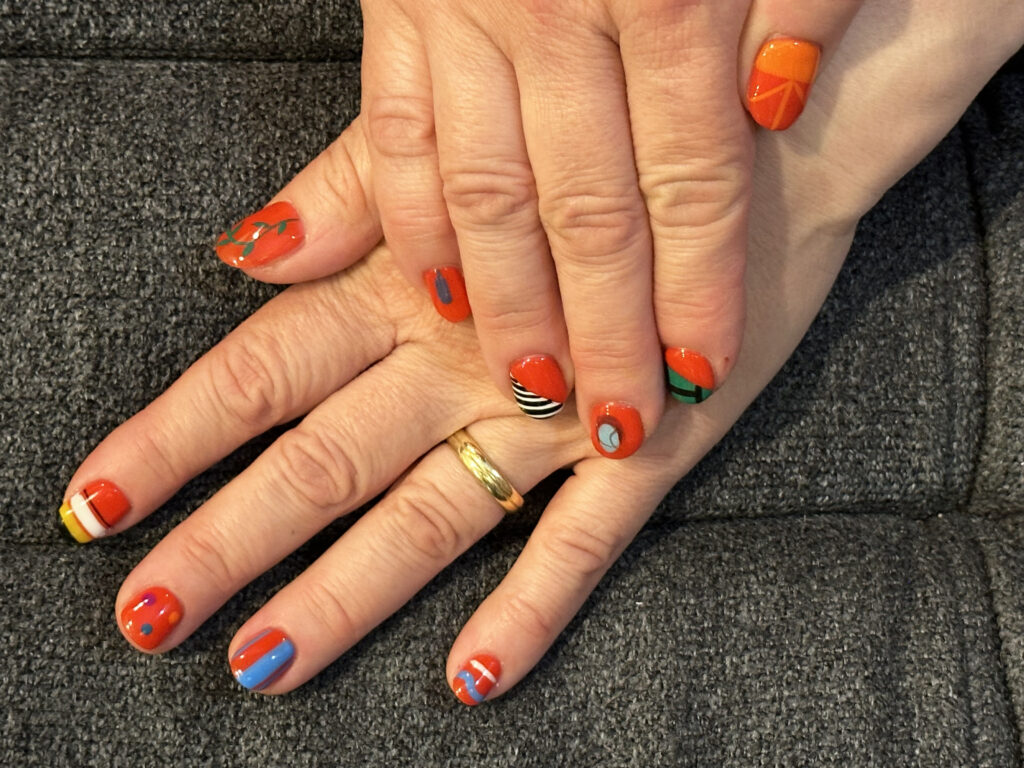
If that seems like a lot of effort for a three-week manicure, you’re right! The truth is, I’m not even that into nail polish: I hate having to sit still and device-less for the hour it takes to have my nails done, and I usually chip my nails too quickly to make the effort worthwhile. That’s why I only get my nails done once or twice a year.
As with so much of AI, however, the fingertips were not the point.
Beyond the AI gumball machine.
You can only see the real value of AI once you stop treating it like a gumball machine. If you look at the prompting process as prompt in, answer out, you are all but certain to find AI disappointing and limiting.
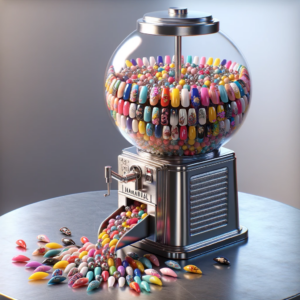
Instead, recognize that working with AI is like any conversation: The process is as important as the outcome. It’s through the process of conversation that we evolve our understanding, build our skills and learn to see things from another perspective.
The payoffs from process.
That’s what I found with Project Nail Vision:
- I expanded my skill set, by exploring possibilities like VR-enhanced nail art.
- I developed my creative thinking, by exploring different approaches to visual and symbolic communication.
- Most of all, I deepened my understanding of and investment in each of my key goals for the year—because the process of conceptualizing and iterating each nail design amounted to a ten-minute (or in a couple of cases, two-hour) meditation on what each goal really meant to me.
When we embrace our conversations with AI as a chance to change and grow, we unlock the real power of intelligence that is anything but artificial.
How could it take so long to make 10 nails?
Here are the variations it took to get to just one nail design: a red-and-blue combo that represents spending more solo time with my sweetie. Each of the images in this Ideogram screenshot is just one of four options provided during that round of image generation.
5 tips for your next visual AI project.
For the nerds and the nail artists out there, here are some specific AI and design lessons that I took away from this process.
- Think in new ways by using AI as a coach. If you’re a not-so-visual person like me, AI can help you learn to think visually—if you share your goal, and ask for suggested approaches, rather than leaping directly to an image request. At GPT’s suggestion I thought about ways of representing Morse Code, how to approach the project as 10 mini-canvases, and how the spatial relationship between my hands depends on the way I overlap my fingers.
- Go down the rabbit hole. I learn the most when I give into the curiosity AI inspires. I’ve never had much interest in VR, but when ChatGPT suggested a manicure that would come to life when viewed through the lens of a phone camera, I spent the better part of a day exploring the possibilities of VR creation with 8th Wall (possible only because GPT coached me through the process of editing VR modules in JavaScript). I built a working prototype, which was enough for me to conclude that even I have better things to do than code animated manicures.
- Use text as the first step to better images. While image generators can help you think through how to symbolically represent a concept, that takes a lot of slow trial-and-error; it’s easier to work out the symbols in conversation with a text-based AI, and then tell an image generator how you want it to represent your idea visually.
- Create images one at a time, because AIs are not great at creating groups of images. Just look at what OpenAI’s DALL-E created when I simply gave it my list of goals! Instead, I designed my nail images one at a time in Ideogram.ai. Once I had ten images I liked, I used Canva to paste them onto two stock clipart hands, so that my nail artist could see which image belonged on which finger. (Yes, I cared.)
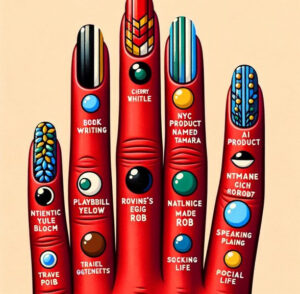
- Some things still take human hands. While I can see that there are lots of other people experimenting with AI-designed nail art, I’ve yet to find an AI-powered nail-painting machine. This whole crazy plan only worked because our local nail salon is serious about nail art…and also, because the novelty of working from an AI-designed manicure was still amusing rather than annoying to Lisa, the amazing nail artist who executed my design. I expect that in another year or so, this kind of thing is going to become very frustrating for nail artists, and reduce the joy of that job (and many others).
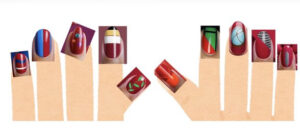
This post was originally featured in the Thrive at Work newsletter. Subscribe here to be the first to receive updates and insights on the new workplace.


Recent Comments